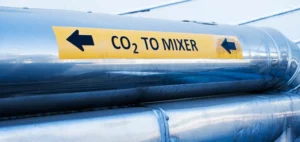Just days before Australia’s federal elections, economic players are closely examining possible scenarios regarding the future of the Safeguard Mechanism, the core framework regulating industrial emissions. This mechanism mandates major emitters to achieve a yearly reduction of 4.9% in their emissions through 2030. Companies exceeding these limits must offset excess emissions using Australian Carbon Credit Units (ACCU) or Safeguard Mechanism Credits (SMC). Since late 2024, election-related anticipations have introduced considerable volatility to the market, with ACCU prices recently fluctuating between AUD 33 and AUD 35 per tonne.
Impact of a Liberal-National Coalition Victory
According to several industry analysts, a victory by the Liberal-National coalition could lead to a softening of the Safeguard Mechanism, reducing constraints on high CO2-emitting industries. This scenario could trigger a potential revision of Australia’s commitments under the Paris Climate Agreement. Practically, such policy changes would likely result in increased early exits from fixed-delivery ACCU contracts. This would boost the secondary market supply, exerting downward pressure on carbon credit prices in the short term.
John Connor from the Carbon Market Institute indicated that implementing such policy shifts would require a strong Senate majority, as any modifications to existing rules would necessitate substantial legislative approval. Matt Pollard, an analyst at Climate Energy Finance, further noted that a Liberal-National government could temporarily generate an oversupply of ACCUs, placing sustained downward pressure on prices.
Alternative Scenario: Consolidation Under a Second Labor Term
Conversely, a re-election of the Labor Party, possibly supported by the Teal independents or the Australian Greens, would likely result in stricter environmental standards. Abhijeet Thakkar, senior analyst at S&P Global Commodity Insights, believes this scenario could maintain or even enhance the current annual emissions reduction rate of 4.9%. Continued strict regulatory requirements could restore market confidence and push prices upward towards the previously proposed ceiling of AUD 75 per tonne, as mentioned by Climate Minister Chris Bowen.
In this context, the Greens have proposed further limiting ACCU credits usage to sectors considered hard-to-decarbonize, mechanically reducing the supply available for emissions offsetting. Such a measure could exert additional upward price pressure while restricting flexibility for Australia’s major industrial emitters.
Medium-Term Market Projections
Despite immediate uncertainties, analysts forecast a gradual market rebalancing after the elections. According to Tasman Environmental Markets, ACCU prices could stabilize around AUD 40 per tonne starting in 2025 due to an expected temporary supply surplus lasting until 2028. This surplus would result primarily from accumulated excess credits during years of low demand driven by political uncertainty.
According to the 2024 Australian Business Climate Survey by the Carbon Market Institute, about two-thirds of respondents nonetheless anticipate significant price strengthening by 2035, with estimates exceeding AUD 90 per tonne. This projected level reflects an expected structural increase in demand driven by accelerating international climate regulation and increasingly stringent domestic requirements.
In an economic context where cost-of-living concerns currently dominate Australia’s political discourse, the evolution of national climate policies will play a crucial role in shaping strategic positioning for businesses and investors in the years ahead.






















